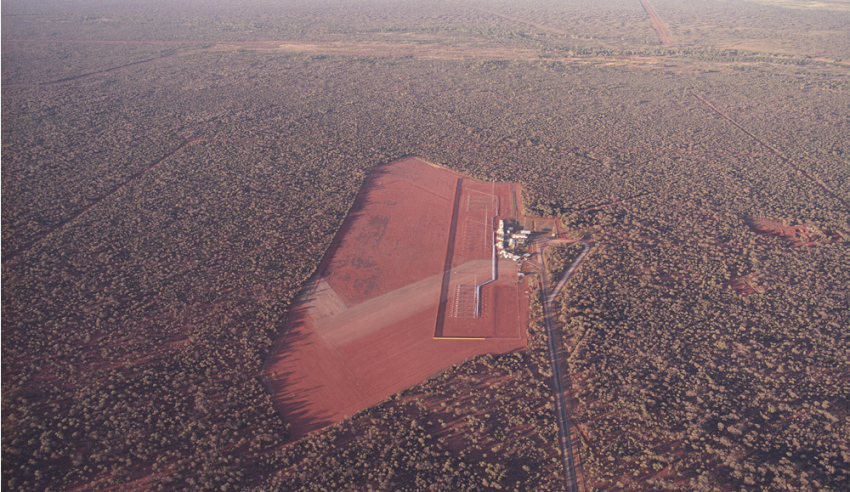JORN has long served as a key force multiplier for the ADF, providing unprecedented over-the-horizon surveillance capabilities to monitor contingencies and co-ordinate responses to the north of the continent. Through the $1.2 billion AIR 2025 Phase 6 program, BAE Systems Australia is extending the life of the network to the 2040s.
To continue reading the rest of this article, please log in.
Create free account to get unlimited news articles and more!
With roots dating back to the Second World War, JORN is one of the longest standing defence projects in Australian history. Responsible for providing a state-of-the-art defence system and wide area surveillance across the nation's northern approaches, JORN plays a vital role in supporting the Australian Defence Force’s air and maritime operations, border protection, disaster relief and search and rescue operations.
As part of the $1.2 billion AIR 2025 JORN Phase 6, BAE Systems Australia is providing a suite of upgrades, acquisition, maintenance and capability improvements across three individual sites for the JORN system.
The three radar sites are located in Longreach, Queensland; Laverton, Western Australia; and Alice Springs, Northern Territory, and are controlled from the JORN Coordination Centre at RAAF Base Edinburgh (South Australia).
Then minister for defence industry Christopher Pyne said, "The upgraded JORN system will be 100 per cent designed, developed and delivered in Australia; by Australians. The JORN Radar System is testament to the ingenuity, dedication and collaboration of Air Force operators, Australian scientists and Australian industry over more than 50 years. It represents world leading technology that is unmatched by any other country."
JORN provides wide area surveillance at ranges of 1,000 to 3,000 km, and plays a vital role in supporting the Australian Defence Force’s air and maritime operations, border protection, disaster relief and search and rescue operations.
Phase 6 of AIR 2025 will provide an upgrade to the OTHR system and is designed to open the system's architecture enabling the future-proofing of the system, extending the life of the JORN network to beyond 2042, with initial operating capacity (IOC) at the Longreach site expected by 2024, highlighting the complexity of the decade-long redevelopment.
The complexity of the upgrade program is providing both BAE Systems and Australian SMEs with the opportunity to collaborate and develop uniquely Australian, world-leading technologies, systems and architectures to support JORN and the capability Defence requires to enhance the security of the nation and capability of the system.
Steve Wynd, program director, JORN Phase 6 Australia, said, "JORN is one of the very few projects in Australia which allows you to design a platform and associated technology from the ground up. That is everything from unique circuitry, ICT systems and software solutions."
Enhancing this is the Joint Open Innovation Network (JOIN). Established by BAE Systems in 2017, JOIN has provided an avenue for closer collaboration between BAE Systems Australia, acting as a prime, and local SMEs, graduates and academics to link in with supporting and enhancing the capability of this nationally important defence project.
JOIN will focus on activities to support the upgrade of JORN and the development of future JORN and intelligence surveillance reconnaissance capability.
As part of JOIN, BAE, in conjunction with the University of Adelaide, University of South Australia, Hewlett Packard and Dedicated Systems Australia, will establish an innovation laboratory, providing a facility that allows industry and academia to collaborate to advance existing and leading-edge defence technologies.
"Australia, through JORN, leads the world in OTHR technology. This has been driven by Defence Science Technology (DST) and government, who have sought to drive out the technical risk for developing these key technologies," Wynd explained.
JOIN provides unique opportunities to SMEs, academics and graduates with a 'plug and play' system, facilities and support to help them participate and feed into the JORN upgrade program.
Once completed, AIR 2025 will enable JORN to cover more area. While this doesn't necessarily translate to an increase in range, Wynd explained, it can mean an increase in performance, enhancing the data provided by JORN, which in turn is then distributed as needed.
This capacity allows BAE to train SMEs and support their integration into the project, enhancing the development of key sovereign industrial capability. BAE has a team of more than 400 dedicated engineers and technicians committed to the ‘life cycle’ of the highly sophisticated JORN capability providing hardware and software engineering development, manufacturing, 24/7 operational support and radar maintenance, logistics and operator training in some of Australia’s most remote areas.
The JORN network is Australia's first comprehensive land and air early warning system. It not only provides a 24-hour military surveillance of the northern and western approaches to Australia, but also serves a civilian purpose in assisting in detecting illegal entry, smuggling and unlicensed fishing.
JORN is owned and operated by the RAAF from the JORN Coordination Centre at RAAF Base Edinburgh, north of Adelaide, alongside BAE Systems Australia headquarters.

 Login
Login







